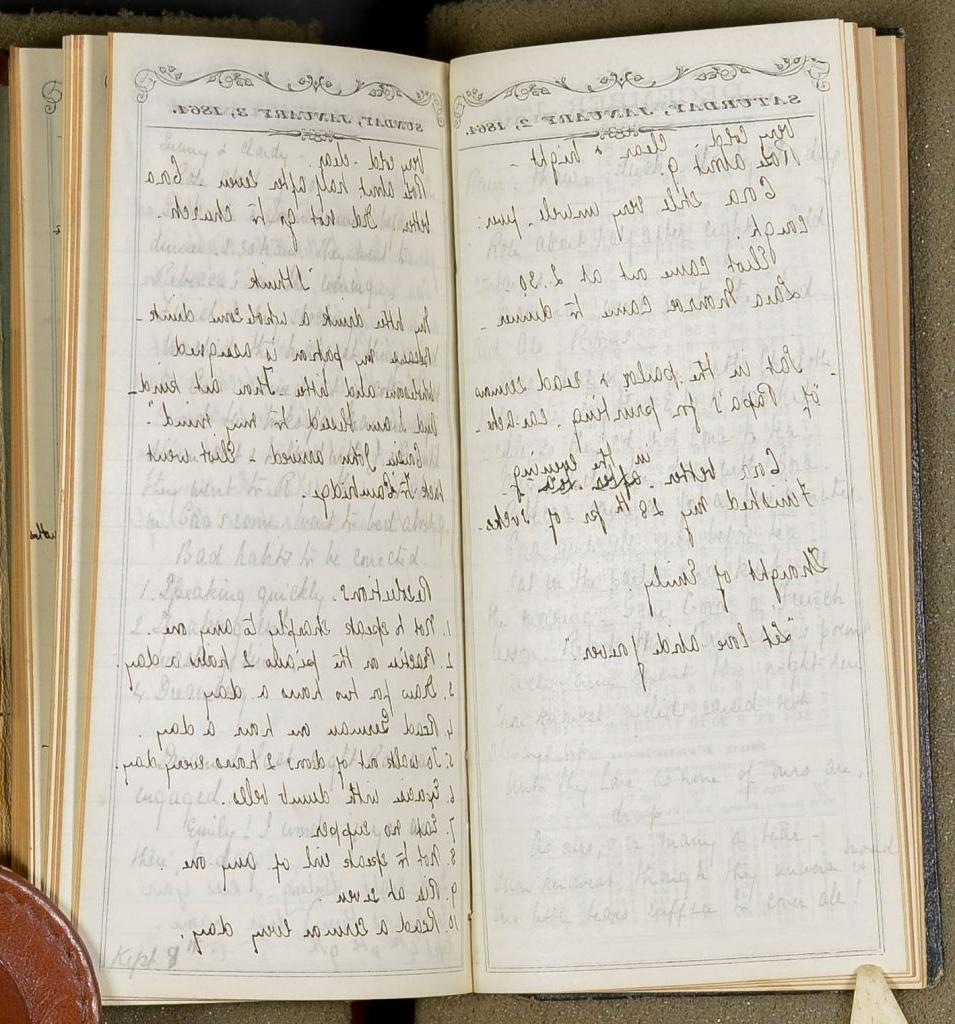By Hilde Perrin, Library Assistant for Reproductions
Every time the new year rolls around, I find myself feeling the obligation to make a resolution. New Year’s resolutions are supposed to give us the chance to finally try things we always wanted to do or set lofty goals that will make our lives better. And yet, every year I find myself either failing to choose a resolution in the first place, or starting one, only to forget about it by the time we reach February (or earlier, if I’m being honest).
One person who was not afraid to set goals for the new year was Lilian Freeman Clarke (1842-1921), a Boston native and the daughter of James Freeman Clarke, a unitarian minister heavily involved in social reform, from the abolition movement to women’s rights. Following the example of her father, Lilian was actively involved in social reform, particularly working to establish and run the Society for Helping Destitute Mothers and Children. The MHS collections hold several documents from Lilian herself in both the Perry-Clarke Collection and the Lilian Freeman Clarke correspondence. One of these, from the Perry-Clarke Collection, is her pocket diary from 1864. Written when she was 18 years old, it contains entries of her daily activities, from visiting friends to attending church events, weather reports, and musings. On January 3, she recorded a list of resolutions for the new year. They are as follows:

“Resolutions
- Not to speak sharply to any one
- Practice on the piano 2 hours a day
- Draw for two hours a day
- Read German one hour a day
- To walk out of doors 2 hours every day
- Exercise with dumb bells
- Eat no supper
- Not to speak evil of any one
- Rise at seven
- Read a sermon every day”
Her list is slightly imposing for people trying to come up with their own resolutions. How was she able to fit in her schedule two hours of piano, two hours of drawing, and an hour of German, and also stay active by walking and exercising with dumbbells? While some of her resolutions are admirable, and I would love to be able to also read German an hour a day and not speak sharply to anyone, I don’t think I would adopt the resolution to “eat no supper” and probably wouldn’t even attempt to devote two hours a day to practicing an instrument. Such a long list of resolutions makes me wonder whether she kept them up.
The very next entry in her diary records that she “rose about 7.30,” already breaking the resolution to rise at 7, if only by 30 minutes. While I was not able to find any more mentions of her list or updates on the resolutions in the diary, I think we can assume that she probably attained some of her resolutions and gave up on others. She kept up her diary entries regularly until about August–recording things like teaching her younger sister, visits to friends, and dreams she had–when she drops off and only includes a few entries here and there for the remainder of the year. Though “journal everyday” was not one of her resolutions, she did not keep up the habit. Whether she successfully completed a year following her New Year’s resolutions or not, we might be able to find inspiration in her list to create our own resolutions for the coming year.

